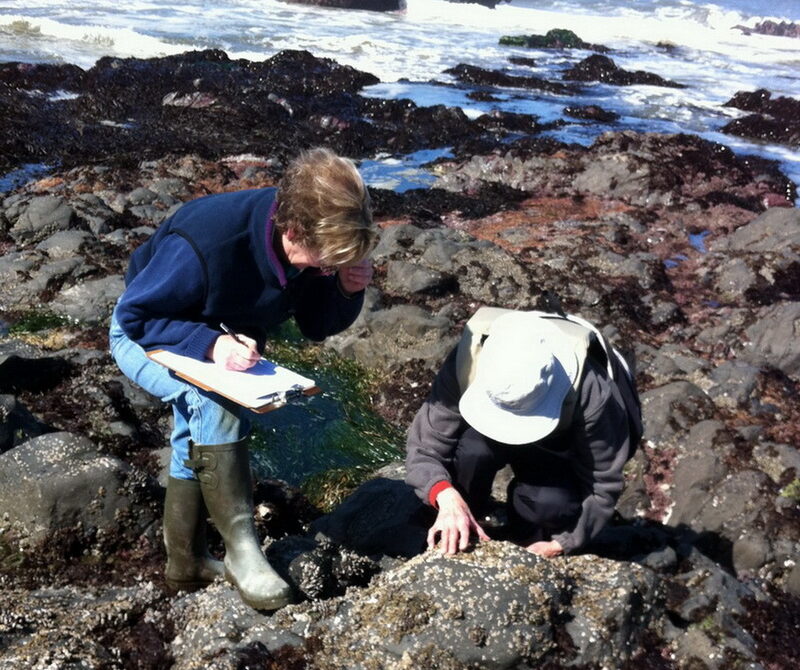Resources > News
Citizen Scientists Help Track Sea Star Populations


Sea stars are keystone species in intertidal ecosystems. Through their predation, they structure rocky shoreline habitats. Monitoring the status of sea star populations is therefore important in understanding the health of intertidal communities—and all the more essential in the wake of the “sea star wasting syndrome” that devastated the populations of these creatures through the West Coast.
CoastWatch partners with MARINe (the Multi-Agency Rocky Intertidal Network) in a citizen science effort that enables non-scientists to assist scientists in studying sea stars. Guided by MARINe, CoastWatch staff trains volunteers year-round who want to contribute to monitoring sea stars on the Oregon coast. Observations are shared to the MARINe website through online forms filled out by volunteers, where they are then mapped for all to see.
CoastWatch volunteers whose adopted miles include rocky habitat often want to contribute more to science, once they learn how ecologically rich the intertidal habitat is. Including sea star observations as part of their CoastWatch mile survey is one of many ways to deepen their experience as CoastWatchers while contributing to the work of scientists. Volunteers may choose a favorite rock or a favorite tide pool to monitor as often as they like. They may also choose a different location every time. These observations provide a snapshot of sea star health to MARINe’s researchers and the general public.
Ochre stars are one of the most recognizable and well-known intertidal species on the Oregon coast, and visible even at most high tides. About a dozen subtidal sea star species are revealed in the lowest tides along the Oregon coast, which happen during the day in the spring and summer and at night in the fall and winter. The next most common one to see is the six-armed Leptasterias (sometimes they’ll have five arms). They are smaller. Another is the Evasterias troschelli, also known as the mottled star, Troschell’s true star and false ochre sea star. The blood star is another easily found beauty.
Learning about types of sea stars is a positive effect of participating in the observation survey. Unless you get into areas that are subtidal except at extreme low tides, you won’t see much more than the ochre star; however, observations of this common species are important. The massive loss of the Ochre star in recent years due to the sea star wasting syndrome, still not fully explained, heightened our awareness of how vulnerable tidepool invertebrates are on the Oregon coast. A recent Oregon law (March, 2022) prohibits the collection of this keystone species, which feeds mostly on mussels, and a recent study outlines how climate change may be contributing to a lack of resilience in these hardy and adaptable creatures.
Our MARINe contact is Melissa Miner, a researcher in the Department of Ecology and Evolutionary Biology at U.C. Santa Cruz who is based in Bellingham, Washington. She has provided us with online tutorials on how to submit sea star observations. In these videos, she gives an overview of the resources available on the MARINe website–such as sea star ID guides –and provides current updates on the recovery of species from sea star wasting and the status of sea star populations in Oregon. One of her presentations can be found here.
